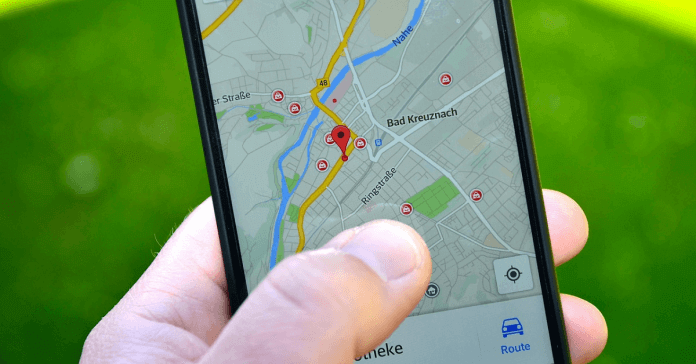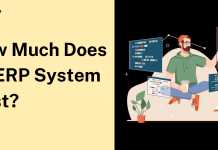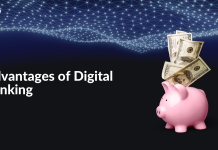Smartphone usage globally has already raised the bar for businesses and their marketing strategies. From features like machine learning and data analysis to high usage of geofencing technology.
Knowing more about their customers with the help of the latest emerging technologies, this new location-based technology is helping brands target their consumers better.
But what is this technology really and how is it useful for businesses, you ask? In this article, we’ll explore how geofencing works and some of the benefits and drawbacks of using this technology.
What is Geofencing Technology and How does it Work?

Geofencing is a location-based service that uses GPS to track the location of devices. It allows you to create virtual boundaries around a real-world location. So when a geofencing device enters or leaves a predetermined area, geofencing can trigger an action that can be used to send them targeted messages or information.
For example, a geofenced area could be used to automatically turn on a sprinkler system when a person enters the boundaries of their yard. Geofencing can also be used to send alerts, such as when a child leaves school or a pet leaves home.
Geofencing can be used for a variety of purposes, including security, marketing, and tracking. This trending technology is often used by businesses to deliver customized content and offers to potential customers nearby their physical locations.
Do you want to know about the other technology trends in 2023? This guide on top technology trends has all the latest tech trends you are looking for.
What is the Purpose of Geofencing?

The use of geofencing technology can offer a number of benefits for businesses and individuals. By creating a virtual boundary around a specific location, geofencing can be used to trigger certain actions or notifications. This can be useful for a variety of purposes, such as keeping track of employees or assets, providing targeted marketing messages, or even increasing security. So if you’re wondering how effective geofencing is, continue reading.
- Targeted Alerts: One of the main benefits of geofencing is that it can be used to target messages or notifications to specific users. For example, if a business offers a loyalty program, it could use geofencing to send special offers to nearby customers. This can be an effective way to boost customer engagement and sales.
- High Precision: Geofencing lets you utilize your marketing efforts in a precise manner. For instance, if you have certain information on how your product will do with a certain demographic, you can target that with the help of location. So rather than targeting a wide range of populations with one campaign, you could easily launch separate champions for rural and urban areas, areas with young families, etc.
- Increased Security: Geofencing can also be used as a security measure. By setting up a geofence around a sensitive area, businesses can be alerted if any unauthorized activity occurs. This can help to deter potential thieves or vandals and help to keep employees and assets safe.
- Cost-effective: Geofencing is cost-effective. If you deal with audiences and consumers in some way to promote your brand or product, it’s possible that you are already using a marketing tool that in some way sets a geofence. Utilizing that will in no way cost you more than the tools you’re already using. In fact, it will boost your marketing efforts by specifying your audience by location.
Geofencing Use Cases

Geofencing technology has a range of potential uses. Here are some use cases of how geofencing can be used:
- Targeted Marketing: Businesses can use geofencing to target potential customers with ads and special offers based on their location.
- Geofencing Security: Geofencing can be used to create virtual boundaries around sensitive areas, such as airports or government buildings, and trigger an alarm if someone or devices like drones enter the area without permission.
- Asset Tracking: Businesses can use geofencing to track company assets, such as vehicles or equipment, and receive an alert if they move outside of a predefined area.
- Child Safety: Parents can use geofencing to create safe zones around their home or child’s school and receive an alert if their child strays outside of the area.
- IoT Devices: Amazon Routines is one of the use cases of a geofence. Give Alexa access to your location data, and you can set up location-based routines and alerts will trigger as you cross a geofence.
- Location Tracking: Many famous apps use location tracking for on-demand services. Take Uber for example. In order to offer users the appropriate services, Uber makes use of geolocation-based configurations from their devices to know which geofence they’re within. It’s a must-have feature for logistics or delivery mobile apps to stay competitive in the industry.
Tips on How to Implement Geofencing into Your Mobile App Strategy

Geofencing has been used by businesses of all sizes to target potential customers with highly relevant and personalized content. This can be done by targeting consumers who are within a certain radius of a business or by targeting consumers who are in a specific city or state.
Geofencing technology is an effective way to reach consumers who are near your business or who are interested in your product or service.
For example, a local grocery store could use geofencing to send coupons and special offers to nearby residents. Or, a national retailer could use geofencing to target shoppers who are near one of its brick-and-mortar locations. If you’re considering using geofencing for your business, here are a few things you need to know!
1. Geofencing Requires a GPS-Enabled Device
In order for businesses to target consumers with geofencing, they need access to GPS data. This data can be collected from consumers’ smartphones or other GPS-enabled devices.
2. Define your Target Audience
To implement geofencing you need to define your target audience. This will help you determine the best location to target consumers and the type of message that will appeal to them.
In order to get a better understanding of how to prepare for a market-fit mobile you can check out this guide to get started with mobile app ideas.
3. Determine the Geographical Areas you Want to Target
Once you have defined your target audience, you need to determine the geographical areas you want to target with your geofencing campaign. This can be done by looking at data such as where your customers live, work, and play.
4. Create Relevant Content
The content of your geofencing campaign should be relevant to the geographical areas you are targeting. This will help ensure that your message resonates with your target location and audience.
5. Ask for Permissions
If you are planning to implement geofencing technology in your app, your mobile app requires user permission to monitor the location and send notifications. So make sure to do so in a way it doesn’t feel like spam.
Final Words
Geofencing is an important technology that can be used for a variety of purposes. Whether you’re looking to keep track of your employees or customers, or you’re hoping to improve the security of your premises, geofencing can help.
However, it’s important to understand how geofencing works before you implement it, as there are some potential privacy concerns that need to be considered. With that in mind, we hope this article has given you a better understanding of geofencing technology and how it can be used.
You can use geofencing technology in your mobile application for several reasons. If your app idea has space for this technology, Applify is the award-winning digital product development company that can guide you in the best possible way. Let’s connect and discuss the possibilities!









